Sharpening a hunting knife is an important part of maintaining your knife, and it’s not as difficult as you might think. With the right tools and techniques, anyone can sharpen their hunting blade to keep it in top condition. In this guide, we’ll discuss the basics of sharpening a hunting knife so that you can get started on keeping your knife in great shape. We’ll go over the materials you need, different methods for sharpening your blade, and how to maintain its sharpness over time. By following these steps, you can ensure that your hunting knife will stay razor-sharp for years to come!
Table of Contents
Knife Sharpening Systems
Sharpening a hunting knife is easier than you might think with the right materials. There are several different systems available, including manual sharpening stones, electric sharpeners, and ceramic rods.
Manual sharpening stones are probably the most traditional way of sharpening your hunting knife. These are flat or round pieces of stone that you use to grind the edge of your blade. You can find them in different grits, from extra-coarse for taking off large amounts of metal quickly to ultra-fine for honing and polishing the edge. Just make sure that you start with a coarser grit before moving on to finer ones.
Ceramic rods are another great option for sharpening hunting knives. These are long, narrow rods with a ceramic surface that you use to hone and polish the blade. They’re great for bringing out fine edges and creating a razor-sharp finish on your knife. [1]

What Equipment Do I Need To Sharpen My Knives?
To sharpen your hunting knives, you will need the following supplies:
- A sharpening stone or diamond stone. This is the most important tool for honing and polishing a blade. You may want to invest in separate stones for coarse and fine grinding.
- A knife sharpening rod. This is used to help straighten out any bent or warped blades.
- A strop. This is a leather strap used to give the blade an even sharper edge by honing it against the opposite side of the blade’s edge.
- Oil and polish. You will need oil to lubricate your sharpening stone and polishing compound to give your blades a polished finish.
- A sturdy table or surface to sharpen on. Make sure it is secure and level for best results. [2]
Here’s A Recap Of Sharpening A Knife, Step-By-Step
Below is a guide on how you can safely sharpen your knife.
Soak The Sharpening Stone
The first step in sharpening a knife is to soak the sharpening stone in water. This helps to prevent damage to the stone while you sharpen your blade, as well as help create a slicker surface for honing your cutting edge. Depending on the type of stone, this can take anywhere from 15 minutes up to an hour or so.
Set Your Knife Angle
The blade angle of a hunting knife is important for its sharpness. Most hunting knives are designed to be used at an angle between 20 and 25 degrees. If you sharpen your knife at a lower or higher angle than this, you won’t get the best performance from it. To achieve the correct blade angle, use a guide rod that comes with your knife sharpening kit. Place the rod at the correct angle and hold it firmly against the blade as you sharpen it.
Draw The Blade
Against a Sharpening StoneThe sharpening stone is one of the most important tools for sharpening a hunting knife. The type of stone to use depends on how dull or damaged the blade is. For instance, a coarse diamond stone may be necessary to revive an extremely dull blade. Shields and guide systems are available to help you maintain the proper angle when honing a blade. Start with a shallow angle, then slowly increase the angle until it’s sharp enough to meet your needs.
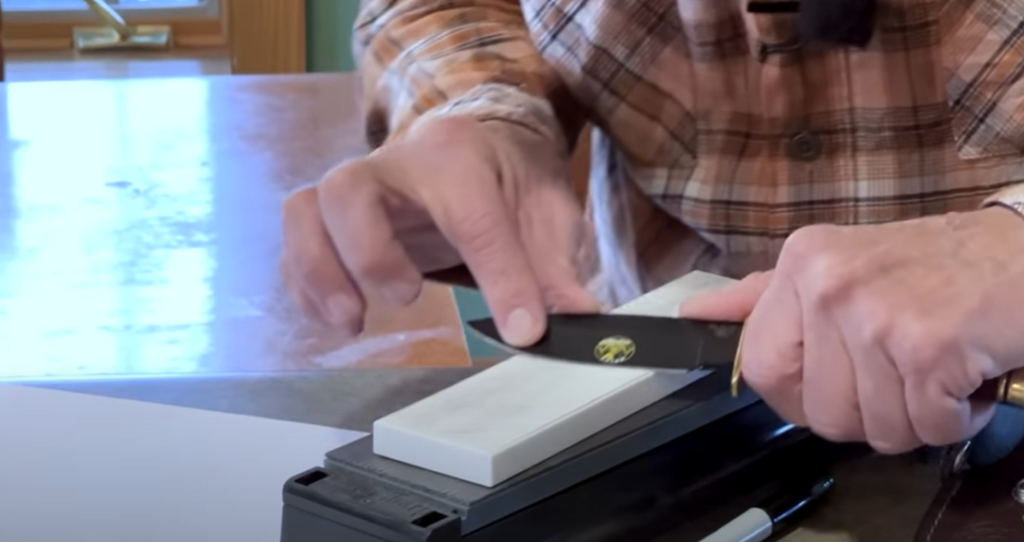
Create A Burr
The next step in how to sharpen a hunting knife is to create a sharpening burr. To do this, use an angle of approximately 20° and lightly stroke the blade across the stone several times until a slight ridge or raised edge forms near the cutting edge of the blade. Make sure that you are applying equal pressure on both sides of the blade as you sharpen. Once you have created a burr, switch to the other side of the stone and repeat the process on that side until a new burr is formed.
Use A Strop
A strop is a very important tool for sharpening hunting knives because it will help to hone the edge and bring out the maximum potential of your knife. To sharpen your knife with a strop, all you need to do is hold the handle of the strop securely in one hand, while at the same time running your knife in a light, circular motion against the leather side of the strop. This should be done in short strokes, and with each pass you should move the knife closer to the tip of the blade. This will help to ensure that all parts of your hunting knife are sharpened evenly. Once you have passed your knife over the strop for several minutes, your knife should be noticeably sharper.
Test The Edge
Once you have finished sharpening your knife, it is important to test the edge of the blade. The best way to do this is by lightly pressing on a piece of paper or cloth with the blade. If it slices through easily, then the edge is likely sharp enough for hunting purposes. If it doesn’t slice through completely, then you will need to go back and sharpen the blade a bit more. Additionally, it is important to check that your blade is not too sharp or brittle as this can cause it to easily chip or break. Finally, if you are planning on using the knife for long periods of time, you should consider investing in a quality sharpening stone which will last a lifetime and keep your hunting knife in great condition. [3]
Knife Sharpening Tips And Tricks
Sharpening a hunting knife correctly can be tricky, but with these tips and tricks you will have your blade sharp and functional in no time!
- Start by gathering the necessary tools, such as an adjustable angle guide, sharpening stone or diamond hone, honing oil or water for lubrication, cleaning cloths, and a honing guide (optional).
- Make sure your knife is clean before beginning. It’s best to use a soft cloth or brush and soapy water, then dry it completely afterward.
- Choose the angle of sharpening based on how you will be using the knife. For general purpose knives, use an angle between 15-20 degrees. For filet knives, use an angle of 10-15 degrees.
- Place the adjustable angle guide on the sharpening stone or diamond hone, and adjust it to your desired angle before beginning. This will help ensure you are honing at the correct angle every time.
- Next, begin sharpening the blade. Start by holding the knife at a slight angle to the stone and pushing it away from you in a light and steady motion.
- Continue sharpening, alternating sides of the blade until you have reached your desired level of sharpness. Make sure to use honing oil or water for lubrication, and always move in the same direction.
- After sharpening the blade, use a honing guide (if available) to further refine the edges of your blade. This will help make sure you are honing at the correct angle.
- Once satisfied with the sharpness of your knife, make sure to clean it again before storing. [4]
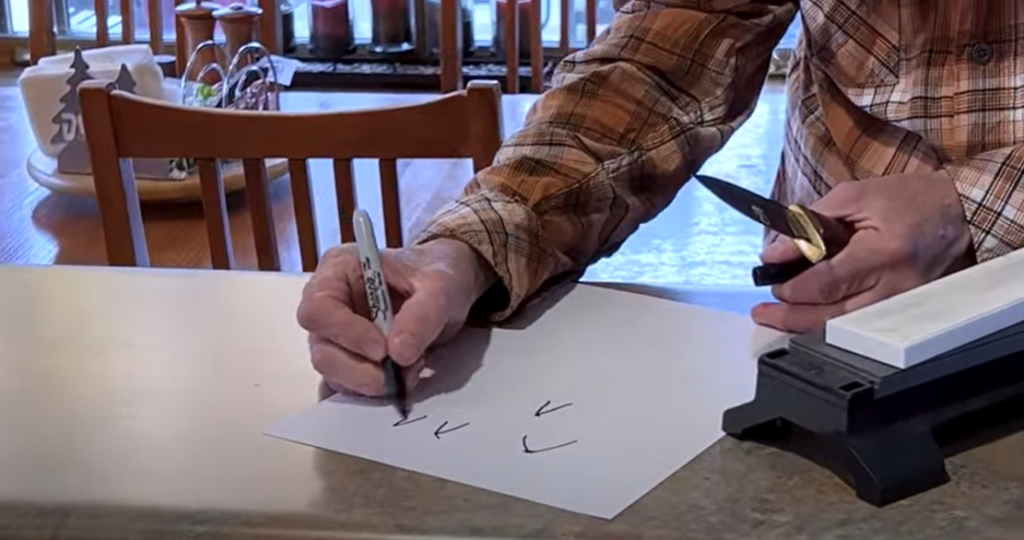
FAQ
Can you sharpen a hunting knife with a kitchen knife sharpener?
No, it is not recommended to use a kitchen knife sharpener for a hunting knife. Kitchen knife sharpeners typically have ceramic rods and are designed to sharpen only typical kitchen knives, which usually have thinner blades than hunting knives. Hunting knives require more aggressive sharpening and should be sharpened with a stone or powered grinder specifically made for sharpening hunting knives. Also, hunting knives are usually made of tougher steel than kitchen knives and can be damaged if sharpened with an inappropriate sharpener.
What is the best knife sharpener for hunting?
When it comes to sharpening a hunting knife, the best tool for the job is a quality sharpener. A good sharpener should be easy to use, make your blade razor sharp, and last for many years with proper maintenance.
When choosing a sharpener, look for features such as adjustable angles and replaceable abrasive stones or rods. Sharpening a hunting knife can be done in two ways: manually using a sharpening stone or a steel rod, or with an electric knife sharpener.
Manual sharpeners require more skill and knowledge of angles to get the perfect edge, while electric sharpeners are quite simple to use. If you choose to go with a manual sharpener, look for one that is dual-sided—one side should be course and the other fine—so you can hone your blade to razor sharpness.
When using any type of knife sharpener, make sure you maintain the proper angle between the blade and the stone or rod while sharpening. A good tip is to imagine a line running through the center of the blade, and keeping the sharpener at that angle. Moisten the stone or rod with water or honing oil before use to reduce friction. To finish off, strop your blade on a leather strap for an extra sharp edge. Always be careful when handling knives—they can be very dangerous. With proper use and regular maintenance, your hunting knife will stay razor sharp for many years to come.
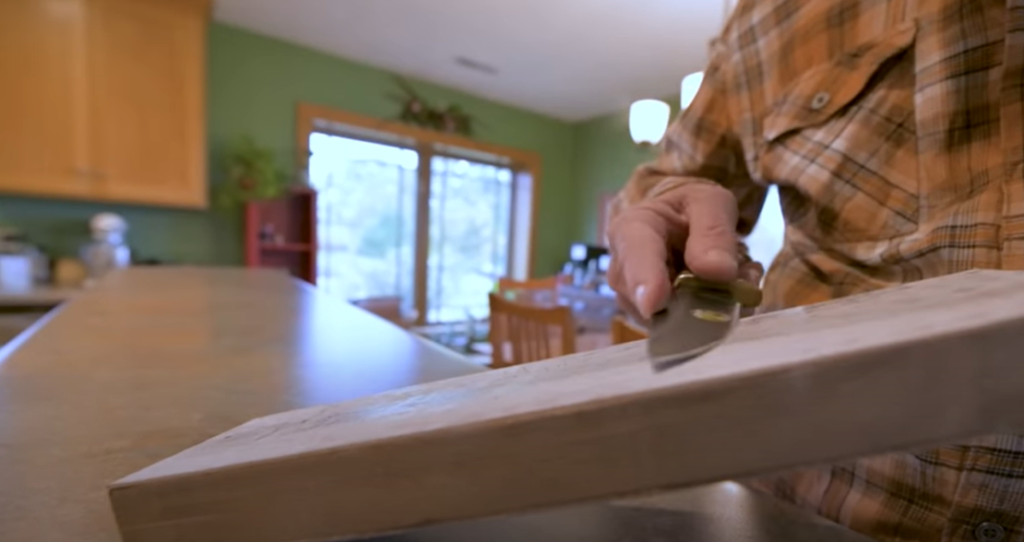
How often should you sharpen your hunting knife?
It is recommended that you should sharpen your hunting knife before each use. This will help keep the blade sharp and help it perform better in the field. It is also important to inspect your knife after each use so that any damage or wear can be identified. If there is some minor damage, then honing your knife could be enough to restore the edge. However, if there is significant damage to the blade, then a full sharpening may be necessary. It is also important to make sure that you are using the correct sharpening technique for your particular type of hunting knife.
Different knives require different methods for proper sharpening, so it is important to make sure that you are utilizing the best technique for your knife. This will ensure that it is performing at its peak and will help prolong the life of your blade. With proper sharpening and maintenance, your hunting knife should last for many years. It is also important to note that you should always use the correct sharpening tool for your particular type of hunting knife. Using the wrong tool can cause damage to the blade and prevent it from performing as expected. With a quality hunting knife and proper sharpening technique, you will be able to enjoy many successful hunts with your trusty weapon by your side. It is also important to store your knife in a dry area when not in use. This will help prevent rust and corrosion from forming on the blade. Proper maintenance and sharpening will ensure that your hunting knife is always ready when you need it.
What is the trick to sharpening a knife?
The trick to successfully sharpening a hunting knife lies in the angle of the blade. A common sharpening angle is 20 degrees, but this can vary depending on the type of steel and the size of your knife. If you are using a manual sharpener, it is important that you maintain the same consistent angle throughout each stroke.
When sharpening your knife, start with a coarse grit stone and work your way up to something finer. Make sure you use light pressure when sharpening so as not to damage the blade. For best results, finish off by honing your knife with a steel rod. This will help to create an even sharper edge on the blade.
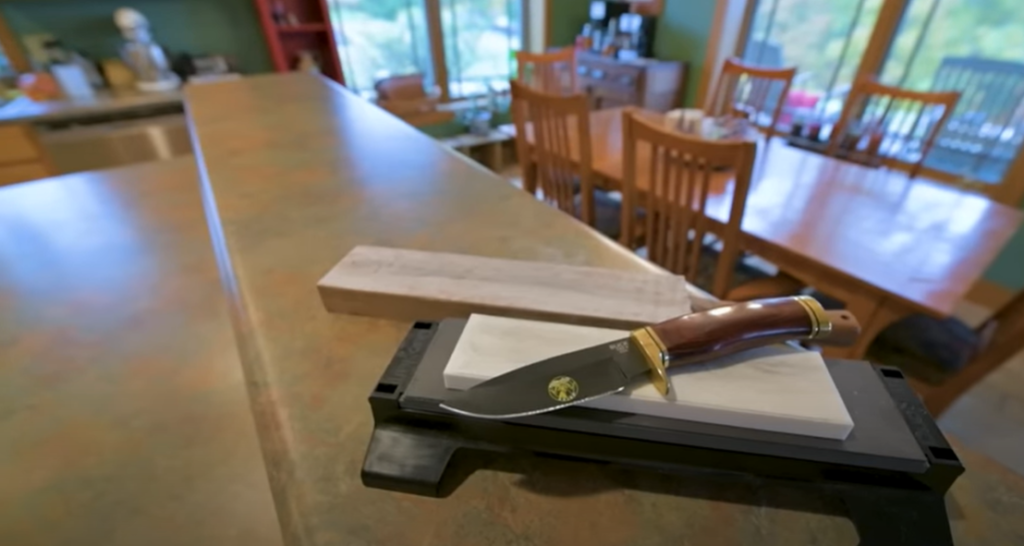
Is it better to sharpen a knife wet or dry?
There is no definitive answer to this question as it depends on the specific knife, its steel type, and desired edge. In general, wet sharpening is more suitable for single-bevel knives whereas dry sharpening works better for double-bevel knives. Wet sharpening involves using a water stone or oil stone and lubricating the blade with water or oil, which helps reduce friction and heat build-up. Dry sharpening involves using a diamond stone or bench grinder to sharpen the knife without applying any lubricant.
When it comes to sharpening hunting knives, wet sharpening is generally preferred since it offers better control of the angle and requires less time. Additionally, water stones are easy to use and can be found in various grits, which makes them a great option for honing the edge of hunting knives. It is important to remember that using too coarse a grit on a knife will create more damage than benefit. Finally, it is important to always follow the manufacturer’s instructions when sharpening a knife. This will ensure that the knife is sharpened correctly and safely.
Do knife sharpeners ruin knives?
No, knife sharpeners will not ruin knives. In fact, using a sharpening rod or a stone is one of the best ways to maintain your blade and keep it as sharp as possible. When done properly, knife sharpening can extend the life of your knife by keeping it in top condition. The key is to use the correct angles and techniques to ensure that your knife is sharpened correctly and not damaged. Be sure to read the instruction manual that comes with your sharpening tool before you begin, as this will provide you with important information about how to use it properly. With regular maintenance and proper technique, you can keep your knives in tip-top shape for years to come.
What angle do you sharpen a hunting knife?
The angle at which you sharpen your hunting knife is very important. You want the blade to be sharpened at a 15-20 degree angle on both sides for optimal results. This ensures that the knife has an even edge and can cut through meat, fur, or other materials easily. Most people will use a guide to help them keep the angle consistent, but those with experience can freehand the sharpening process. Also, having a sharpening stone or other type of device with different grits can help you achieve the perfect angle.
Is it better to use oil or water on a sharpening stone?
When it comes to sharpening a hunting knife, you can choose either an oil or water based sharpening stone. The debate on which is better often comes down to personal preference. Oil stones are the traditional choice for many knife sharpeners, as they offer consistent results and a long-lasting edge. They require lubrication with a honing oil, and the end result is usually very sharp. Water stones also provide consistent results, but they have some advantages over oil stones. They don’t need to be lubricated with oil, so there’s less mess involved in sharpening your knife. Additionally, waterstones are great for dealing with softer metals such as aluminum or stainless steel, and they can be used to give a finer edge. Ultimately, it comes down to personal preference when deciding which sharpening stone is better for you. If you’re not sure what works best for your knife, experiment with both oil and water stones to find out which gives you the best results.
How do I know if my knife is 15 or 20 degrees?
The most accurate way to determine the angle of a blade is with a set of angle guides. These are wedges that come in various angles from 10-40 degrees, and can be placed flat against the edge of your knife to help you measure it accurately. You should always aim for an angle between 15-20 degrees when sharpening hunting knives. If your knife’s blade angle is below 15 degrees, it may not hold an edge for long; if it’s over 20 degrees, the knife will be too dull and won’t perform as well.
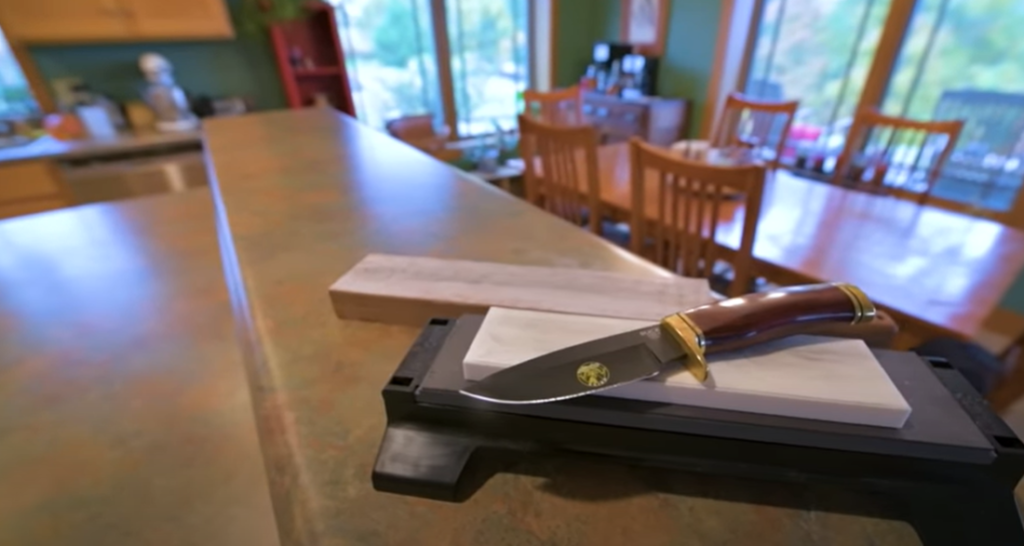
Is it worth sharpening your own knives?
Yes, it is definitely worth sharpening your own knives. Not only will you save money by not having to purchase a new knife every time it becomes dull, but you can also customize the blade to suit whatever situation or task you are using it for. Whether you’re hunting and need a razor-sharp edge or just doing everyday tasks, sharpening a knife yourself can be a cost-effective solution. Also, if you take the time to properly sharpen and maintain your hunting knife, it can last for years.
Is sharpening stone better than a sharpener?
The answer to this question depends on the type of knife you have. If you are using a high-end hunting knife, then it is best to use a sharpening stone for optimal performance. Sharpening stones provide more control and accuracy so that you can sharpen your blade with precision.
You will also be able to get an even edge and ensure that it is as sharp as possible. On the other hand, if you are using a cheaper hunting knife, then a sharpener may be your best bet as it will allow you to get an edge quickly and easily without having to worry about doing too much work. Both types of sharpeners will do the job well—it just depends on the type of knife you have. Whichever method you choose, make sure to use it regularly as a dull blade can be dangerous when using outdoors. You want to make sure your blade is always at its best in order for you to be able to successfully hunt and protect yourself from any potential danger.
Useful Video: How to Sharpen A Hunting Knife
Conclusion
Sharpening a hunting knife takes practice. It’s important to start with the right supplies and remain patient. To sharpen a hunting knife, use an oil stone, sharpening steel or grinding wheel in combination with honing oil or water. Ensure that your sharpening angle is consistent and allow it to develop over time. Take breaks while sharpening and check your progress on a regular basis. With plenty of practice, you’ll soon be able to sharpen any hunting knife with ease.
References:
- https://www.themeateater.com/cook/butchering-and-processing/how-to-sharpen-a-knife-in-the-field
- https://www.kentofinglewood.com/blogs/news/how-to-sharpen-hunting-knives-pocket-knives
- https://www.onxmaps.com/hunt/blog/how-to-sharpen-a-knife
- https://www.buckknives.com/about-knives/knife-sharpening/


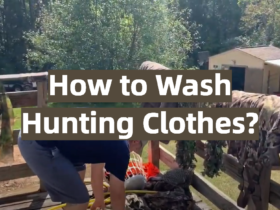

Leave a Reply